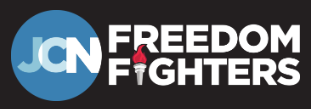Healthcare Reform Effort is Just Another Reason to Be Thankful This Thanksgiving

Americans have a lot to be thankful for this Thanksgiving. Even the less fortunate among us enjoy living standards and economic opportunities that are the envy of the world.
If Americans do have a legitimate grievance, though, it’s our healthcare system. It’s the pimple on the princess.
A recent study by the Kaiser Family Foundation finds that the cost for employer-provided health insurance has increased by 54 percent since 2009 to more than $20,500 per family. Average deductibles have doubled over that timeframe. Voters rank healthcare as their No. 1 issue.
At last week’s Democratic presidential primary debate, Democratic candidates again pitched their Medicare for All proposal to fix this broken system. Given the extensive media coverage around Medicare for All, Americans can be forgiven for thinking that it’s the only alternative to the status quo.
It’s not. The Trump administration issued a new final rule this month demanding healthcare price transparency from hospitals. This seemingly simple reform is a vital first step in bringing more information to patients to finally create a patient-driven healthcare market where patients can shop for healthcare procedures. This information will impose pricing discipline on providers, incentivizing them to keep costs low to attract patients’ business. Naturally, hospitals have promised to sue to block the rule’s implementation, so they can protect their secret pricing and associated profits.
Price transparency is an essential piece of healthcare reform efforts such as the Job Creators Network Foundation’s “Healthcare for You” framework. Two of its other major provisions, direct medical care and expanded healthcare management accounts (a.k.a., health savings accounts), depend on clear prices from providers.
JCNF’s extensive research into the demonstrated healthcare preferences of American consumers finds that restoring the doctor-patient relationship is one of the most important health reforms Americans demand. Therefore, any reform should prioritize direct medical care (DMC), where patients pay out of pocket for their procedures at one guaranteed, all-in price. Such a change would remove the bureaucrats, lobbyists, and politicians from the exam room, putting the doctor and the patient back in control.
There’s a growing number of low-cost imaging, specialist, and surgical centers, which offer services at transparent prices without distortionary third-parties. Telemedicine allows patients to get a diagnosis quickly and inexpensively through their smartphone. Dozens of surgical centers around the country are already posting their cash prices online at rates that are mere fractions of what the local hospitals charge. For family medicine needs, this model is known as direct primary care; families pay a monthly rate to cover all their basic healthcare needs.
Transparent prices and paying cash for healthcare services would dramatically bring down healthcare costs. But patients would still need an insurance plan to protect against emergencies. The “Healthcare for You” framework would eliminate many of the federal health insurance regulations that drive up costs. It would empower states to issue their own insurance regulations. Patients could then pair an inexpensive catastrophic healthcare plan with DMC for routine procedures. Other patients could still purchase “Cadillac” insurance if they chose to. Insurance deregulation would produce more choices at lower costs.
To make DMC and deregulated insurance even more affordable, policymakers should expand healthcare management accounts, which allow patients to use pre-tax dollars to pay for their healthcare services. Employers and family members should be allowed to contribute pre-tax dollars directly to these accounts, so patients can finally achieve portable coverage that enables them to move from job-to-job and in and out of the labor market. This reform would let employers, who currently provide health insurance for 181 million Americans, empower their employees to choose the healthcare plan that works best for them.
Currently, tax-free account limits are set way too low — at just $7,000 per family. This threshold should be eliminated. And these accounts are presently limited to “qualified high-deductible health plan[s].” This restriction should also end, so patients could use PCMAs to pay for any healthcare-related expenses.
Price transparency, direct medical care, expanded healthcare management accounts, and deregulated health insurance offer a compelling alternative to the current healthcare system that’s causing so much pain. They’d reduce costs, increase choice, and improve the doctor-patient relationship. These reform efforts are something extra to be thankful for this Thanksgiving.





